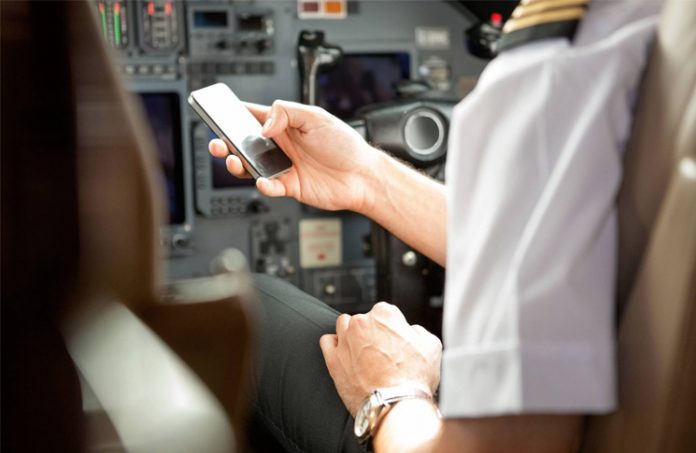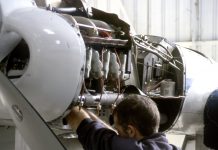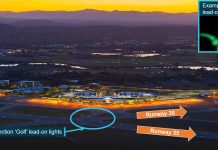There have been many light-bulb moments in the history of aviation. Unfortunately, some have been anything but inspirational.
On 13 January 1969, the nose gear light in a Scandinavian Airlines DC-8 would not turn green, and the aircraft crashed in international waters about 6 nm west of Los Angeles, killing 15 of the 45 people on board. A lack of crew coordination and distraction caused by the burnt-out landing gear light contributed to a loss of situational awareness about the altitude of the aircraft.
History was repeated on 29 December 1972, when, in a better-know case, a burnt-out light bulb in a Lockheed L-1011 Tristar bound for Miami lead to the death of 101 people.
The crew had become fixated on the landing-gear light and failed to notice that the autopilot had disconnected and that the plane was descending.
The plane crashed into the Florida Everglades and only 75 of the 176 on board survived. The accident was a catalyst for the introduction of crew resource management.
Driven to distraction
Fast-forward nearly half a century to the new champion of distraction: the mobile phone and its spawn, constant chatter, endless email and torrential texting. For those concerned with road safety, they’re a nightmare. And they should also concern pilots.
An article in the Royal Australian College of Surgeons journal in 2015 described driver and pedestrian distraction, particularly from mobile phones, as ‘a challenge of almost epidemic proportions’. The symposium was told that driver distraction contributed to nearly a quarter of car crashes, and more than 70 per cent of truck crashes.
‘Simply put, drivers using a mobile phone are approximately four times more likely to be involved in a crash’, a paper in the society’s journal said.
The message in road safety campaigns such as the NSW Government’s Get your hand off it is that two seconds of distraction while looking at a mobile phone can double the risk of a crash. The aim of the campaign is to encourage drivers to keep their eyes on the road.
While hands-free use of mobiles is legal for most drivers, some psychologists and neuroscientists warn that this practice places drivers at increased risk, particularly if the conversation requires the driver to use visual imagination.
Australian National University vision scientist Professor Ian Morgan has examined the research on hands-free phone usage. He says that there is a strong case for banning all non-essential use of mobile phones—including hands-free—while driving, as the impact of driver distraction can last for 15 to 30 minutes after a call is finished.
In The Conversation’s February 2017 edition, Nottingham Trent University psychology professor David Crundall said that the cognitive processing required for a phone conversation can compete with the processes needed for operating a vehicle in traffic. The fact that hands-free conversation is generally legal can give drivers a false sense of security.
‘If we prioritise a phone conversation over road safety, then we risk a crash,’ he said.
Importantly, Professor Crundall says that the risk of driver distraction during a hands-free phone conversation is greater than that from merely conversing with a passenger. This is because the passenger can see what the driver sees and generally knows to stop talking when the driver needs to concentrate on the road.
Conversely, there is evidence that if a driver taking a phone call becomes quiet while concentrating on a driving task, the person at the other end of the call—who lacks visual cues—may talk more to fill the silence.
How does this translate to the cockpit? After all, pilots are trained to use the radio and fly the aircraft simultaneously. Surely nothing bad will come of a short period of distraction?
Perhaps—but timing is everything.
Mobile phone use was a significant factor in a serious ‘incorrect aircraft configuration’ incident involving a Jetstar Airbus A321 attempting to land in Singapore in May 2010.
The ATSB report on the incident said that between 2500 and 2000 ft, the crew heard noises associated with incoming text messages on the captain’s mobile phone. The first officer, who was pilot flying, twice asked the captain to set a missed approach altitude into the flight control unit but received no response.
The first officer, seeing that the captain was preoccupied with his mobile, set the missed approach altitude himself. According to the ATSB report, the captain said that he was unlocking and turning off the phone and did not hear the first officer’s request.
The crew failed to complete the landing checklist and the aircraft made a go-around because the landing gear had not been deployed in sufficient time.
Mobile phones have also been implicated in fatal accidents in the United States. For example:
- In May 2014, the crash of a Cessna 150 in Colorado killed the pilot and passenger. There was evidence from a GoPro camera recovered from the aircraft that the pilot and passenger had been taking selfies on their mobile phones, using a flash, while in night IMC conditions. The National Transport Safety Board report concluded that it was ‘likely that cell phone use during the accident flight distracted the pilot and contributed to … the loss of control.’
- Distraction due to personal texting by the pilot during ‘safety-critical ground and flight operations’ was a contributing factor in the fatal crash of an emergency medical services helicopter in Missouri, USA, in August 2011. The helicopter, which was operating in day VMC, crashed because of fuel exhaustion.
- A student helicopter pilot in Palm Beach, Florida, sued his flight school in 2016, alleging that his instructor was using FaceTime on his mobile phone just before their Robinson R22 went down, killing the instructor and seriously injuring the student.
Distraction can come in many forms. For example, some GA pilot headsets have Bluetooth or wired connections to music players and mobile phones. The headset may automatically attenuate audio and the phone when there is traffic on the radio, but as you groove along or chat on the mobile, can you be sure that you didn’t miss the start of an important ATC instruction or an all stations call?
And there is also a risk of distraction which compromises fitness to fly.
Before the advent of mobile phones, pilots were essentially uncontactable for personal matters while in the air. If there was a family emergency, they would probably not hear about it until they were safely on the ground.
But imagine a pilot who, half way through a flight, receives a phone call or text from a partner saying that his or her child is in hospital—or worse. Even if the aircraft could be turned around, the state of mind of the pilot would most likely be affected.
Time to turn off?
Since April 2014, US airline pilots have been prohibited by Federal Aviation Administration regulations from using electronic devices for personal reasons while on duty in the cockpit. The European Union has similar rules. However, crews are still able to use approved devices for operational purposes.
While there is no specific prohibition relating to the use of mobile phones by crew members, the Australian Civil Aviation Act contains a general overarching provision that requires a person not to recklessly operate an aircraft in a manner which could endanger the life of another person or the property of a person. Under the Civil Aviation Regulations, the pilot in command of an aircraft is responsible for the overall safety of the aircraft, crew and passengers. That responsibility applies equally to airline captains and GA pilots, who may rely on mobile data reception at relatively low levels for their electronic flight bag.
The Australian Mobile Telecommunications Association has opposed bans on hands-free use of mobiles in cars. On the other hand, it supports airline policies which require passengers’ mobile devices to be off or be placed in flight mode.
Aside from the issue of potential interference with aircraft systems, attempting to use a mobile phone at high altitude is likely to be futile; the battery will drain quickly as the phone searches in vain for terrestrial phone towers.
But if potential interference with aircraft performance is the underlying rationale for airlines’ accepted practice, then it’s reasonable to expect a similar practice to avoid possible impairment to pilot performance.
Further reading: Pilot Cell Phone Use: Don’t Be That Guy.





Very fine article. Mobile phones should be electronically jammed as the car engine starts. Governments should lead, ( and legislate car manufacturers to ensure mobile phones are electronically switched off when the engine is running ) and not allow the telco’s to dictate their own profit driven agendas. Governments ( i.e the pubic ) pick up the cost of trauma services, hospital admissions, rehab and loss of income tax from the individual.
WELL WRITTEN Tim I am 100% agree with your comments and well done by F.S.A. TO BRING THESE VERY GOOD POINTS TO OTHERS THANK YOU
Good article that is timely and on point.
Mobile Phones for operational use may make a bad situation much better eg for total electrical failure at night under IFR & in IMC amongst CB’s in case Mobile phone coverage is available. Having emergency numbers set in Mobile Phone Contacts is a worthwhile precaution – even for radio failure in VMC or when very rare PAL lighting failures occur. I can personally recommend from my pre -mobile phone era pilot experiences!